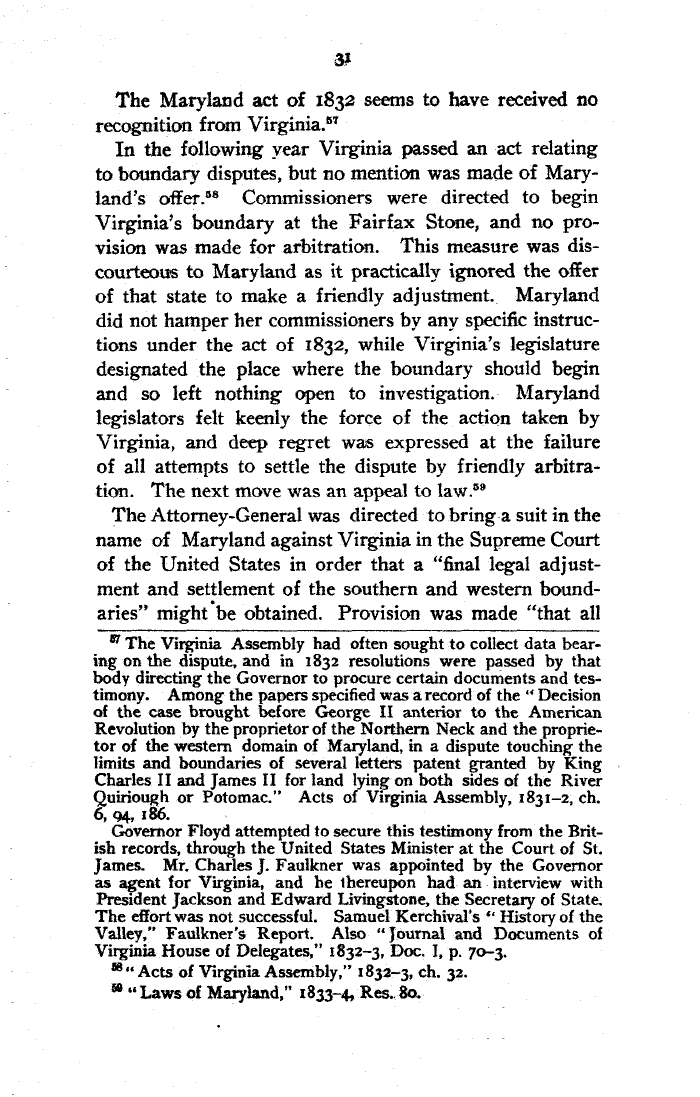| 31
The Maryland act of i$32 seems to have received no
recognition from Virginia
In the following year Virginia passed an act relating
to boundary disputes, but no mention was made of Mary-
land's offer.a8 Commissioners were directed to begin
Virginia's boundary at the Fairfax Stone, and no pro-
vision was made for arbitration. This measure was dis-
courteous to Maryland as it practically ignored the offer
of that state to make a friendly adjustment. Maryland
did not hamper her commissioners by any specific instruc-
tions under the act of i$3a, while Virginia's legislature
designated the place where the boundary should begin
and so left nothing open to investigation.- Maryland
legislators felt keenly the force of the action taken by
Virginia, and deep regret was expressed at the failure
of all attempts to settle the dispute by friendly arbitra-
tion. The next move was an appeal to law as
The Attorney-General was directed to bring -a suit in the
name of Maryland against Virginia in the Supreme Court
of the United States in order that a "final legal adjust-
ment and settlement of the southern and western bound-
aries" might 'be obtained. Provision was made "that all
°t The Virginia Assembly had often sought to collect data bear-
ing on the dispute, and in 1832 resolutions were passed by that
body directing the Governor to procure certain documents and tes-
timony. Among the papers specified was a record of the " Decision
of the case brought before George II anterior to the American
Revolution by the proprietor of the Northern Neck and the proprie-
tor of the western domain of Maryland, in a dispute touching the
limits and boundaries of several letters patent granted by King
Charles II and James II for land tying on both sides of the River
Quiriough or Potomac." Acts of Virginia Assembly, i83t-2, ch.
6, cue, 186.
Governor Floyd attempted to secure this testimony from the Brit-
ish records, through the United States Minister at the Court of St.
James. Mr. Charles J. Faulkner was appointed by the Governor
as agent for Virginia, and he thereupon had an interview with
President Jackson and Edward Livingstone, the Secretary of State.
The effort was not successful. Samuel Kerchival's f' History of the
Valley," Faulkner's Report. Also "Journa3 and Documents of
Virginia House of Delegates," t832-3, Due. I, p. qo-3.
~ •' Acts of Virginia Assembly," 1832-3, ch. 32.
~° "yaws of Maryland," i$33-4, Res.. 8o.
|

